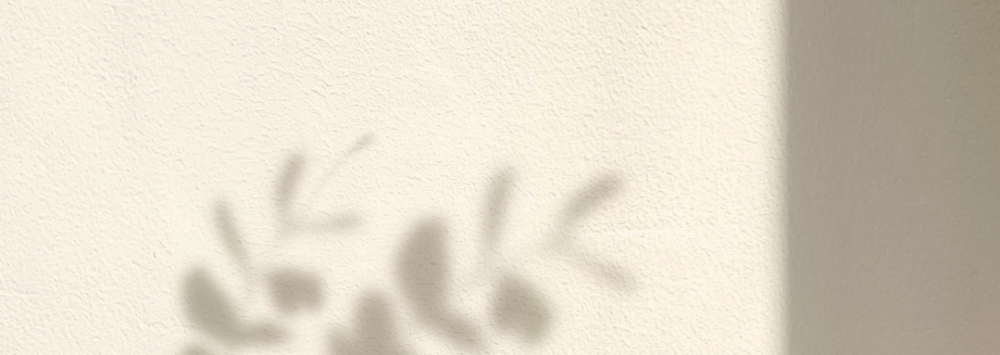By Judith Stern
After our first fifty minutes, my new therapist concluded, “Self-acceptance might be helpful.” I almost laughed out loud. I totally accept myself, I thought. Compared to where I was just five years ago, how could I possibly be any more accepting? Pamela didn’t know me as the suicidal self-harming millennial who practically wore the name label on my sweatshirt announcing, “Hi! I’m Wrong. Nice to meet you!” She didn’t see me attacking myself, physically and mentally, on a daily basis, largely a result of long-ingrained self-hate. She just saw Judith. So when she suggested I examine my self-acceptance, I wanted to say: “no, go look back at my file. I already did that, already checked that off. I accept everything about me!”
Before I met Pamela, I did a lot of hard work, including twenty-five years worth of therapy, medication trials, and varying levels of hospitalizations. At five, I started therapy for selective mutism and anxiety. I felt ashamed I couldn’t speak to the therapist, and instead smashed her offered pretzels into the carpet in frustration, and threw her plastic doll house figurines across the office. I hid behind her oversized green couch, and wrote my answers to her questions with my finger on the fabric, being sure to erase everything with my palm before the end of the session. I had a lot to say, but she didn’t hear any of it.
At a young age, I began a mental accumulation of all the things I didn’t like about myself: my weight, my hair, the terror in my stomach I sometimes felt on the way to school, the mean words I shouted at my siblings, and, especially, that I couldn’t talk even when I wanted to. I needed to fix these things, and all the others that began to increasingly arise.
When I finally found my voice, everyone commented positively on the change. I was so proud, beaming for my Bat Mitzvah, and even landing the role of Daddy Warbucks in my summer camp’s production of “Annie!” In middle and high school, I began talking back to teachers, glowing in the attention from my peers as well as the sense of control I now felt. I had finally fixed this part of myself, and now I was worthy. I could just be me, adolescent snark and all.
Until the depression, and the anxiety set in in new flavors. Until I couldn’t will myself to go to swim practice. Until the panic attacks during the Chemistry tests. Until my private school told me I needed to leave because I wasn’t doing any work and I was distracting my peers. Until I gained fifty pounds because eating seemed the only comfort. Until I wasn’t going to school at all, was hardly getting out of bed. Until, I needed to fix everything about me. Again.
I took the medications, switched the dosages, the drugs, the therapists, the psychiatrists, the swim teams, the schools, the friends. I tried to switch everything around me and inside of me. Sometimes, I thought it worked. I graduated high school, college, graduate school. But every time there was a slip in the plan, every time something didn’t go the way I told myself it should – transferring colleges, a negative review from my supervisor, or my depression coming back louder – I went back to needing to fix.all.the.things. I went back to believing I just needed to try harder and do better.
I could certainly accept myself, only once I fixed myself. From the age of about four, this was my life’s work, to repair the broken human I’d come to believe I was. Anxiety, depression, and later OCD played Whack-A-Mole with my life, and I kept trying to beat them all. Instead, I was beating me, and I was exhausted. I so often felt broken, that I was not trying hard enough, that I was a bad person. OCD continues to love this particular threat, taunts me by twisting most anything I do or don’t do into “…and what if that makes you a bad person?”
One day a few years back, a therapist said to me, “and what if you’re not broken?” I thought at first it was another joke, as we’d developed a comfortable back and forth humor roll over the months of working together. But he was straight-faced. I swallowed, took in his words, and tossed them away. He clearly just didn’t know me well enough yet – he’d find out how broken I was soon enough. Except it turned out that I was the one getting to know myself better, and almost shockingly, I realized I believed this therapist. I was not – am not – broken.
I began to see myself as worthy, just because I existed in the world. I began again to see Judith, still with a spark of snark, moods that swirled, and a sense of introspection bordering on hazardous. In bits and pieces, I began to accept myself not for who I wanted to be, but for who I actually was. With this acceptance, hope opened up.
The realization that I wasn’t broken, that right now I was actually enough, was exhilarating. I didn’t have to like the fact that my anxiety made it hard for me to walk the dog and interact with neighbors, but I could simultaneously accept it. I could let myself be depressed and cry for a few hours because that’s the way my brain chemistry happens to swirl, and then I could let it go. I didn’t have to analyze why or what I needed to change. I could just let it be. At least a decade ago, I’d been introduced to the phrase: “you can’t stop the waves, but you can learn to surf,” by Jon Kabat-Zinn. Though I’d understood the words on an intellectual level, this was the first time I was living them. How grand to not be broken, how glorious to be human!
When I met with Pamela a few years later, she agreed I wasn’t broken. She also saw me fighting with myself though, trying to fix the feelings and thoughts that still felt “wrong.” I realized that I was again the four-year-old wondering when I’d get the “how to be human” manual everyone else seemed to pick up at birth. Pamela helped me notice the return of this incessant fight, and how OCD especially was pulling me in again, demanding I find the “right” path in every endeavor I undertook. She helped to remind me that self-acceptance isn’t dependent on anything other than existence and that the practice of doing so is ongoing. I am beginning, again, to adjust to this practice.
I have spent so much of my life chasing after “just right.” The just right job, partner, family, home, friends, mental health. I want to do it all right. Sometimes the changes in life, even positive, make me question if I am indeed broken, if maybe I do need fixing. But the lesson I keep learning is that I am not Right or Wrong; I am Judith. Who I am now is enough. Often, I need reminders of this fact, and I am grateful to the many professionals and friends and family who gently nudge me towards this truth. I am grateful to those who truly see and hear me, so that I can see myself. When Pamela suggested I re-examine self-acceptance, it was familiar territory, but recovery is not one-and-done, checking off the boxes. Recovery is many little steps, over and over.
I think of yet another therapist from years earlier, telling me to “drop the rope.” I visualize this image from time to time, see myself letting out an exaggerated sigh as my shoulders fall back to earth with the relief of truly letting go. When I recognize myself fighting me, playing tug-of-war with my emotions and thoughts, I can begin to accept that recovery, life, is not about fixing me. It’s about being me. Repeatedly.


Absolutely loved reading this article. As someone who is always looking to do the ‘right’ thing, it deeply resonated. It’s not about right or wrong; it’s about being me. Simply me. Love it!
Thank you for your story. Especially identified with your wish for things to go a certain way. My story is: OCD & Me: My Journey of Over Six Decades. Hope you will be coming to conference in July!
I really enjoyed this article. I can relate to trying to reach the point of fixing myself. I keep feeling like I am failing with all of my setbacks, but it is really just a part of life. Having OCD is a part of who I am, and that is okay. Thank you!
I needed to read this…to learn to accept myself, even with the OCD, and try to stop fighting myself or my thoughts. To stop trying to “fix” myself.